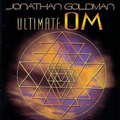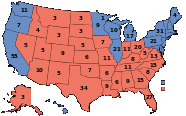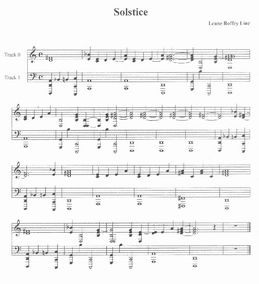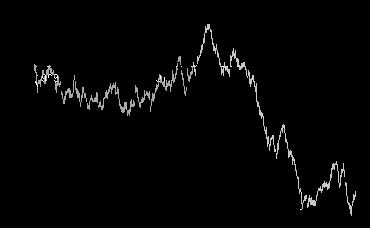Music from REG data
Using sound to detect structure in the data
What about the possibility we could use music to detect structure in the data? There is a history dating back to the beginning of the project of ideas for making music based on or driven by the Egg data. There is another sort of history of unusual music in my background, playing with friends long ago and far away. One of the friends is Jim Burton who occasionally surfaces with some splendid new art/music. Try Passages from a Buried Script (in Quicktime).
The first music played using the EGG data was by John Walker, who made daily movies for a time (up to May 2000). These movies show the eggs as splashes whose color and size relate to the size of deviations in the data, placed on a map of the world with time of day shown by the moving shadow of night. And, each changing splash of color is accompanied by notes that make a random composition reminiscent of the music of John Cage. A midi file of just the sound for Oct 24 1998 will give you a taste. We called this piece Music of the Ovoids.
Many years later (in 2018!) this technology was applied to the stream of realtime data by Sound Childe, who hosts an Egg in Bangalore. This work is an example of world class collaboration between two gifted programmers inspired by the same wish to create a sensory experience of the random scores. The coding to access the live data was created by Ronaldo Barbachano (check out his music), who developed it to serve a vistual display of the data on a google map. Listen to Sound Childe here: GCP Vibe&Cell "This a GCP-to-MIDI track (in mp3 format) recorded using a Vibraphone instrument instead of the standard piano default (for approx the first 2 minutes) and then, I switch the instrument to a Cello for the rest of the track. The vibraphone sounds almost hypnotic and the cello of course can sound quite dramatic. I was playing around with the note delay and the new Note-delta/Scaling multiplier mentioned above, which is what pushes some of the notes to both the lower & higher extremes of the octaves.. but other than that, this clip is as good as a direct interpretation of the first Egg's deviation from the Mean. I kinda like it actually, not bad for initial experimentation :)"
So do I. The approach is richly flexible, and we can look forward to variations.
After John's data-movies, a different kind of implementation came into being, and the results were very interesting. These are the first examples, by Leane Roffey and Mark P. Line. Leane took samples from music by Corelli, selecting according to EGG data recorded on New Years 1999. The result is a delightful short piece called New Year 99. Although Leane died in 2011, her music lives lives on.
Music of the Noospheres,below we excerpt a beautiful piece called Ultimate OM, by Jonathan Goldman. Enjoy!

Goldman-UltimateOm.mp3
Mark’s work uses the random data directly to select pitches and presence for a tubular bell instrument tuned to a pentatonic scale. It is called Pentatubes. This is a midi format piece of only 889 bytes, but you will be astonished at the amount of music such a small file can carry. (Reminds me of Buckminster Fuller’s observation that we have plenty of material, if we organize it intelligently.)
I have made some examples using Mark’s tools (all in midi format.) Number one is called Second Hit. It plays the data from 09:03 to 09:05, New York time, on Sept 11 2001, using phrases from a short recorder piece by John Bull (1563-1628). Next we have Crystaline Millenial which plays data from the two minutes around the transition from 1999 to 2000, using a text evoking a babbling brook, by Leane Roffey. More to come; it’s fun. Leane sent a transposed brook, with lower register, just right for my Bassoon Birthday.
Jeff Robertson of SoundSpace Studios did a track inspired by the GCP raw data for November 2, 2004, entitled 9 pm Election Night.

See the detailed description.
Heard of Bach’s Canon Perpetua? Here’s an application of a similar circle of fifths
in Greg’s Birthday. Leane’s birthday provides the data and her blues riff measure bank the interpretation in LR Blues.

For the season of celebration, Leane composed an experimental two-voice piece called simply Solstice. It is beautiful, I think, despite that it is driven by random data (from 12/21/2002 12:00:00 to 12:00:23). A score excerpt is below (which you can click to see a larger image). And for the season (in the North anyhow) she made Snowflakes.
In one explicit attempt to detect structure in the data, Mark created a measure bank that represents larger deviations as quicker phrases. You can hear that in 911 Taiko @ 80 (176 sec).
The difference an instrument can make
To give a feeling for the difference an instrument can make, I made Are You Ready for This? (253 sec) with Mark’s birthday data.
Testing a new drone piece that’s intended to become more harmonious with data coherence, I took a moment from the time of my mother’s death for Momsgone (78 sec). The same measure bank was used with bagpipes for 911 Dirge (128 sec), which plays 61 seconds from Sept 11 2001, starting at 10:00, New York time. The moment was selected for its steep cumulative deviation. The drone is quite nice with different instruments and a different time (08:46) on 9/11: Vibraphone (154 sec), Shakuhachi (154 sec), and Crystal FX (157 sec). And I made a long piece using data from 08:40 to 08:50, good for background: Long First Hit (16.75 min).
And for an evocative simulation of changes in a random mode check out this recent video by jimXburton on youtube.
For music of a different flavor, Jim took a graphic approach. He literally creates a music line that tracks the longterm deviation of the GCP/EGG data. He first removed any image elements that were not the data, then made a greyscale image. The resulting piece in its first manifestation is called 1ST GRAFF (just below). I made a lightly edited version, 1ST GRAFF Transformed, that better matches my hearing range. Definitely cool, and closing in on the concept of data driven music.

Or, try the low-pitch version, 1ST GRAFF Transformed
1stgraff-low.mp3 (750 K)
1stgraff-low.ogg (908 KB)
Now Jim has done a resampled version to do the same, 1st Graff Resample:
We’re moving on, and getting progressively closer to the data. I sent Jim a graph with the data lines for a short dozen eggs, and he sent back a piece that scrambles them nicely, which I’ll call Many Eggs in Play.

And here are some further examples (Flash-based) of extended application, putting random egg music together with random visual art. Check out Space473 and Space474 by Philip Wood. Try some others too, like space476 and 479. Space478 is fun, and space563 touches on the noosphere. My favorite of these is Space589 because it uses such nicely random egg graphics and music. You may want to drop in on Philip’s main page and poke a few buttons.
